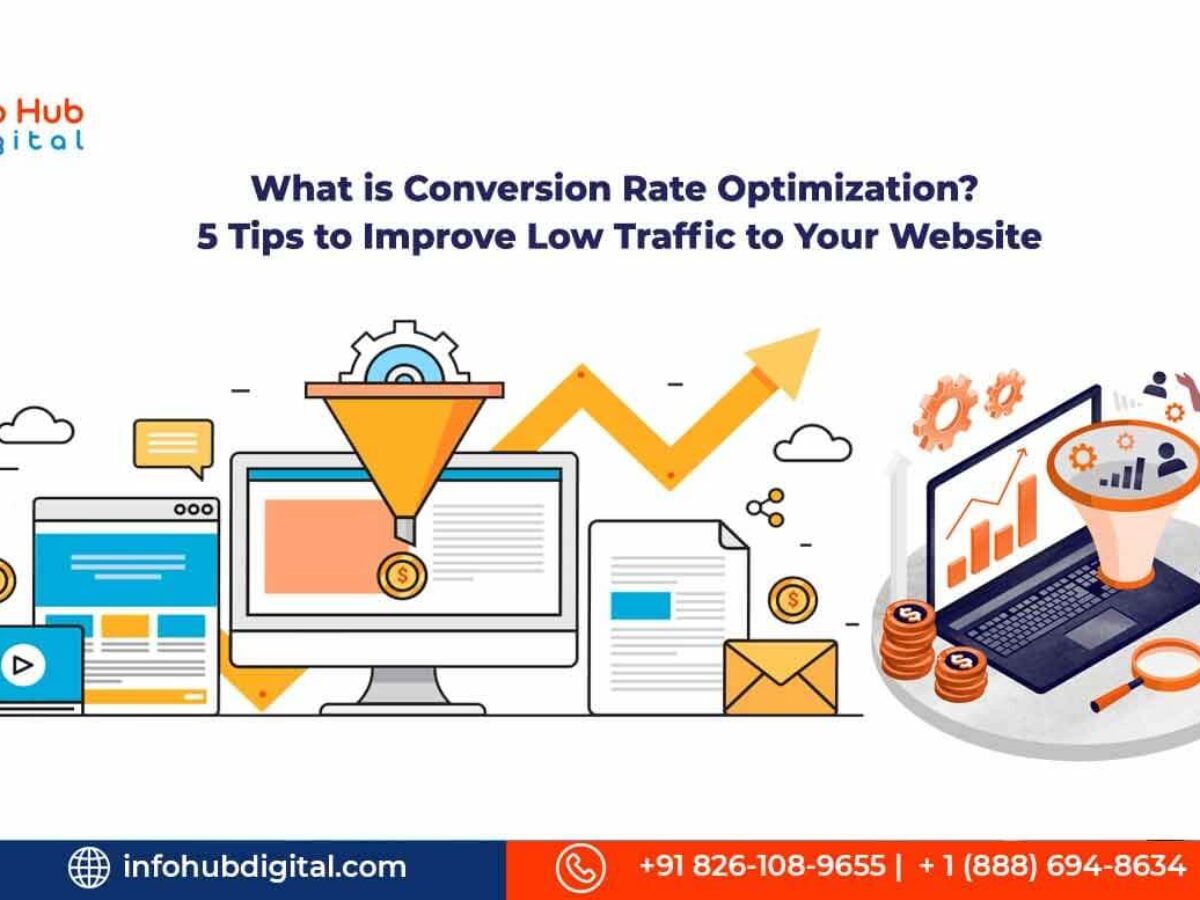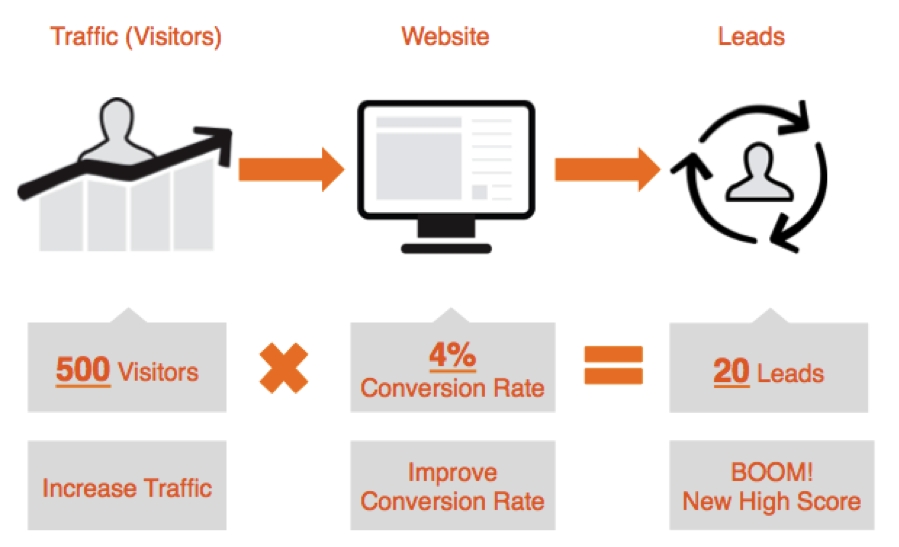Boost your website traffic and drive conversions with powerful advertising strategies
Buy CPC Traffic | Buy Display Ads | Exclusive traffic sources | Buy Push Ads | Popunder ADS | Buy Native Ads | Buy Preroll Ads

Buy CPC Traffic | Buy Display Ads | Exclusive traffic sources | Buy Push Ads | Popunder ADS | Buy Native Ads | Buy Preroll Ads
Are you struggling to generate enough traffic to your website? Do you find it challenging to convert those visitors into paying customers? If so, you're not alone. Many businesses face these common challenges when it comes to their online presence.
Fortunately, there are effective strategies you can implement to increase website visits and boost conversions. One of the most powerful methods is leveraging ad traffic. By utilizing targeted advertisements, you can attract qualified visitors who are more likely to engage with your website and make a purchase.
However, simply running ads is not enough. To maximize the impact of your ad traffic, you need to employ effective strategies that ensure your ads are reaching the right audience at the right time. This involves careful planning, market research, and optimization.
With the right ad traffic strategies in place, you can not only increase the number of visitors to your website but also improve your conversion rate. This means more potential customers exploring your products or services, and ultimately, more revenue for your business. So, let's dive into some key techniques that will help you achieve these goals and take your online presence to the next level.
Increase Website Visits and Conversions
Targeted Traffic
To increase website visits and conversions, it's important to attract the right audience to your site. Getting generic and uninterested visitors won't do much to boost your conversion rates. Instead, you need targeted traffic – individuals who are more likely to be interested in your products or services.
There are several ways to bring targeted traffic to your website. One effective strategy is to buy click traffic. This means purchasing ad space on relevant websites or through ad networks, such as web traffic buy, that can deliver visitors who are specifically interested in your niche.
Engaging Content
Once you have targeted traffic coming to your site, it's crucial to provide them with engaging and relevant content. This includes informative articles, captivating images, and user-friendly navigation. The more your website resonates with visitors, the more likely they are to stay, explore, and convert.
Consider implementing strategies such as personalized landing pages that cater to different audience segments. Tailoring your content to specific groups of visitors can greatly improve their experience and increase the likelihood of conversions.
In conclusion, increasing website visits and conversions requires a combination of targeted traffic and engaging content. By attracting the right audience and providing them with valuable information, you can effectively boost both your website traffic and conversion rates.
Drive Targeted Traffic to Your Site
Getting quality traffic to your website is key to increasing your conversions and achieving your business goals. But how exactly can you drive targeted traffic to your site? Here are a few strategies:
Search Engine Optimization (SEO): Optimize your website content with relevant keywords, meta tags, and descriptions to improve your organic search rankings.
Content Marketing: Create high-quality, valuable content that is optimized for SEO and share it on your website, blog, and social media platforms to attract and engage your target audience.
Pay-Per-Click Advertising (PPC): Use platforms like Google Ads or web traffic buy to bid on keywords and display ads to reach your target audience when they search for relevant terms.
Social Media Advertising: Target your audience on popular social media platforms like Facebook, Instagram, and LinkedIn by creating well-targeted ads that attract their attention.
Influencer Marketing: Collaborate with influencers in your industry who have a loyal following to promote your products or services and drive traffic to your website.
Email Marketing: Build an email list of interested prospects and send them targeted campaigns with valuable content, special offers, or product updates to drive traffic back to your site.
By implementing these strategies and monitoring your website analytics, you can optimize your traffic generation efforts and attract the right visitors to your site, increasing the likelihood of conversions and business success.
Optimize Your Ad Campaigns
Running ad campaigns can be an effective way to drive traffic to your website and increase conversions. However, it's important to optimize your ad campaigns to ensure you're getting the best results possible.
1. Define Your Goals

Before launching an ad campaign, it's crucial to clearly define your goals. Are you looking to increase website visits, generate leads, or drive sales? Once you have a clear understanding of your objectives, you can tailor your ad campaigns accordingly.
2. Know Your Target Audience

Understanding your target audience is essential for optimizing your ad campaigns. Conduct market research to identify your ideal customer persona. This will help you create ad content that resonates with your target audience and increases the chances of conversions.
Furthermore, use demographic and interest data to target your ads to the right audience. Platforms like Facebook and Google Ads allow you to narrow down your target audience based on various parameters, such as age, location, interests, and more. By reaching the right people, you can maximize the effectiveness of your ad campaigns.
3. Test Different Ad Formats

Experimenting with different ad formats can help you find the most effective ones for your target audience. Test various formats, such as text ads, image ads, video ads, and carousel ads, to see which ones resonate the most with your audience and drive the highest number of conversions.
4. Monitor and Analyze Your Results

Regularly monitoring and analyzing the results of your ad campaigns is crucial for optimization. Track important metrics, such as click-through rates (CTRs), conversion rates, and cost per conversion, to identify any areas that need improvement.
Use analytics tools, such as Google Analytics, to gain valuable insights into user behavior on your website. This information can help you optimize your ad campaigns by making data-driven decisions.
In conclusion, optimizing your ad campaigns is a continuous process that requires defining goals, understanding your target audience, testing different ad formats, and monitoring your results. By constantly refining your strategies, you can increase website visits and conversions, ultimately improving the success of your online advertising efforts.
Leverage Social Media Advertising
Social media platforms have become a powerful tool for reaching and engaging with potential customers. By leveraging social media advertising, businesses can increase website visits and conversions. Here are some effective strategies to consider:
1. Define your target audience: Before launching any social media advertising campaigns, it's crucial to identify your target audience. This will help you refine your ads and ensure they reach the right people.
2. Choose the right platforms: There are numerous social media platforms available, but it's essential to select the ones that align with your target audience's preferences and interests. Whether it's Facebook, Instagram, Twitter, or LinkedIn, focusing on the platforms where your audience is most active can yield better results.
3. Create engaging content: To capture your audience's attention, it's crucial to create visually appealing and compelling ads. Use eye-catching images or videos, along with persuasive copy, to make your ads stand out.
4. Utilize targeting options: Social media platforms offer various targeting options to reach a specific audience. Take advantage of these options to refine your ads and ensure they are seen by people interested in your products or services.
5. Monitor and optimize: Keep a close eye on the performance of your social media ads. Monitor metrics such as click-through rates, conversion rates, and engagement levels. Use this data to optimize your ads for better results.
6. Run retargeting campaigns: Retargeting allows you to reach people who have previously interacted with your website or shown interest in your products. By running retargeting campaigns, you can remind them of what they were interested in and persuade them to come back and make a purchase.
7. Test and experiment: Social media advertising offers plenty of opportunities for experimentation. Test different ad formats, images, copy, and targeting options to see what works best for your audience. Continuously experimenting and adjusting your strategies can lead to improved ad performance.
8. Engage with your audience: In addition to advertising, make sure to engage with your audience through social media. Respond to comments, messages, and reviews in a timely manner. Building a strong connection with your audience can lead to increased brand loyalty and word-of-mouth promotion.
By leveraging social media advertising, businesses can effectively drive website visits and conversions. Implementing these strategies and continuously monitoring and optimizing your ads will help you maximize your advertising efforts on social media platforms.
Create Compelling Landing Pages
A well-designed landing page is crucial for driving traffic to your website and converting visitors into customers. Here are some strategies to create compelling landing pages:
1. Clear and Concise Headline: Your headline should be attention-grabbing and clearly convey the value proposition of your product or service. Keep it short, simple, and compelling.
2. Use Engaging Copy: Write persuasive copy that highlights the benefits of your product or service. Address the pain points of your target audience and explain how your offering can solve their problems.
3. Add Persuasive Images or Videos: Visual content can significantly enhance the impact of your landing page. Include high-quality images or videos that showcase your product or service in action. This will help grab the attention of your visitors and keep them engaged.
4. Use Trust Signals: Trust signals, such as customer testimonials, endorsements, or badges from reputable organizations, can create trust and credibility. Place them strategically on your landing page to reassure visitors about the quality and reliability of your offering.
5. Create a Clear Call-to-Action: Your landing page should have a clearly visible and compelling call-to-action (CTA) button. Use action words and create a sense of urgency to encourage visitors to take the desired action, such as making a purchase or signing up for a newsletter.
6. Optimize for Mobile: Ensure that your landing page is mobile-friendly and responsive. With the increasing use of smartphones and tablets, it is crucial to provide a seamless experience across different devices. Test your landing page on various screen sizes to make sure it is easily accessible and visually appealing on mobile devices.
7. A/B Testing: Continuously monitor and optimize your landing pages through A/B testing. Test different variations of headlines, copy, images, CTAs, and layouts to identify what works best for your target audience. These experiments will help you refine your landing page and improve its effectiveness over time.
By implementing these strategies, you can create compelling landing pages that not only attract more visitors but also convert them into loyal customers. Remember to track and analyze the performance of your landing pages regularly to make informed decisions and further optimize your conversion rates.
Implement Retargeting Strategies
Retargeting is a powerful advertising strategy that can help maximize website visits and conversions. It involves targeting users who have previously visited your website or interacted with your brand in some way. By reminding them of your products or services, you can increase the likelihood of them returning and taking the desired action.
1. Set Up a Pixel
The first step in implementing retargeting strategies is to set up a pixel on your website. A pixel is a small piece of code that you place on your site, which allows you to track user behavior and collect data. The pixel collects information, such as the pages users visit, actions they take, and products they view. This data will be used to create custom audiences for your retargeting campaigns.
2. Define Your Target Audiences
Once you have set up the pixel and started collecting data, it's time to define your target audiences. You can create various audience segments based on user behavior, such as those who abandoned their shopping carts, those who visited a specific product page, or those who spent a certain amount of time on your site. By segmenting your audiences, you can deliver personalized retargeting ads that are relevant to each group's interests and preferences.
For example, if a user added products to their cart but didn't complete the purchase, you can retarget them with a specific ad offering a discount or reminding them of the items they left behind. This tailored approach can be more effective in capturing their attention and encouraging them to return to your site.
3. Create Compelling Retargeting Ads
The success of your retargeting campaigns relies heavily on the quality of your ads. Make sure your ads are visually appealing and include persuasive copy that highlights the unique selling points of your products or services. Use eye-catching images or videos to grab the users' attention and evoke their interest.
Additionally, consider using dynamic retargeting ads, which automatically populate with products or content that the user has shown interest in. This personalized approach can significantly increase engagement and conversions.
It's also essential to set a frequency cap to avoid bombarding users with too many ads, which can lead to annoyance and resentment. Find the right balance that keeps your brand top of mind without overwhelming the user.
In conclusion, retargeting can be a highly effective strategy to increase website visits and conversions. By implementing a pixel, defining target audiences, and creating compelling ads, you can actively engage with users who have shown interest in your brand and improve the chances of them converting. Remember to regularly review and analyze the results of your retargeting campaigns to optimize and refine your strategies over time.
Analyze and Refine Your Approach
To maximize the effectiveness of your ad traffic strategies, it is crucial to regularly analyze and refine your approach. By continually assessing your campaigns and making necessary adjustments, you can ensure that you are optimizing your website visits and conversions.
1. Monitor Key Performance Indicators (KPIs)

Keep a close eye on important metrics that indicate the success of your ad traffic strategies. These metrics can include click-through rates (CTR), conversion rates, bounce rates, and the average time spent on your website. By monitoring these KPIs, you can identify areas that need improvement and implement necessary changes.
2. Conduct A/B Testing
A/B testing involves creating multiple versions of your ads and testing them against each other to determine which one performs better. By comparing different elements such as headlines, images, calls to action, and landing page designs, you can gain valuable insights into what resonates best with your target audience. Based on the results, you can refine your approach and optimize your ad campaigns.
Example: For instance, you could test two different versions of your headline - one emphasizing a discount and the other focusing on a unique selling proposition. By analyzing the click-through rates and conversions for each version, you can determine which headline generates better results and make necessary adjustments to improve your overall ad performance.
3. Use Conversion Tracking
Implement conversion tracking on your website to measure the effectiveness of your ad campaigns in driving desired actions, such as purchases or form submissions. By tracking conversions, you can gain valuable insights into which ads and keywords are generating the most conversions. This data can help you allocate your budget more effectively and optimize your ad traffic strategies accordingly.
4. Analyze and Optimize Landing Pages
Your landing pages play a crucial role in converting ad traffic into actual leads or customers. Regularly analyze the performance of your landing pages by measuring metrics such as bounce rates, time on page, and conversion rates. Use the insights gained to optimize your landing page design, messaging, and call-to-action buttons for better conversions.
Note: It's essential to maintain a consistent message and design between your ads and landing pages to ensure a seamless user experience and increase the likelihood of conversions.
By consistently analyzing and refining your ad traffic strategies, you can improve the effectiveness of your campaigns and drive more website visits and conversions. Remember to regularly test and optimize various aspects of your approach to stay ahead of the competition and achieve your desired results.
Stay Ahead with Continuous Optimization

1. Track and Analyze Data
The first step in continuous optimization is to track and analyze data related to your ad traffic. This includes data on impressions, clicks, conversions, and more. By closely monitoring this data, you can identify trends, patterns, and areas for improvement.
Utilize tools such as Google Analytics or other analytics platforms to gain valuable insights into your website visitors, their behavior, and the effectiveness of your ads. This data will serve as the foundation for making informed optimization decisions.
2. Conduct A/B Testing
A/B testing involves creating two different versions of an ad or landing page and testing them simultaneously to see which one performs better. By changing one element at a time, such as the headline, call-to-action, or color scheme, you can determine which version resonates more with your target audience.
Continue to iterate and test different variations to optimize your ads for better performance. A/B testing allows you to make data-driven decisions and refine your strategies based on real user preferences and behaviors.
3. Optimize Landing Pages
Your landing pages play a crucial role in converting visitors into customers. Continuously optimizing your landing pages can significantly impact your conversion rates. Test different layouts, content, and calls-to-action to find the most effective combination.
Ensure that your landing pages are mobile-friendly, load quickly, and have clear and compelling messaging. Design them with a user-centric approach in mind, focusing on providing a seamless and intuitive experience for your visitors.
4. Stay Up to Date with Industry Trends
The digital marketing landscape is constantly evolving, and it is crucial to stay abreast of the latest industry trends and best practices. Subscribe to industry newsletters, follow relevant blogs and thought leaders, and attend conferences or webinars to stay informed.
By staying up to date with the latest trends, you can identify new opportunities or emerging strategies that can give you a competitive edge. Implementing new tactics and staying ahead of your competitors will ensure that your ad traffic strategies remain effective and impactful.
In conclusion, continuous optimization is a vital component of any successful ad traffic strategy. By tracking and analyzing data, conducting A/B testing, optimizing landing pages, and staying informed about industry trends, you can stay ahead and maximize your website visits and conversions.
How can I increase website visits and conversions?
There are several effective ad traffic strategies to increase website visits and conversions. First, you can optimize your website for search engines to improve organic traffic. Second, you can run targeted advertising campaigns on platforms like Google Ads or social media platforms. Third, you can use content marketing to attract and engage your target audience. Finally, you can leverage email marketing to reach out to your existing customer base and encourage them to visit your website.
What are some best practices for optimizing my website for search engines?
To optimize your website for search engines, you should start by conducting keyword research to identify relevant keywords for your business. Then, you can incorporate these keywords into your website's meta tags, headings, and content. It's important to create high-quality, original content that provides value to your audience. Additionally, improving your website's loading speed, user experience, and mobile responsiveness can also help with search engine optimization.
Which social media platforms are the most effective for running targeted advertising campaigns?
The effectiveness of social media platforms for targeted advertising campaigns depends on your target audience and business goals. However, platforms like Facebook, Instagram, and LinkedIn are generally popular choices. Facebook offers advanced targeting options based on demographics, interests, and behaviors. Instagram is visually-driven and can be useful for businesses that have visually appealing products or services. LinkedIn, on the other hand, is more focused on professional networking and can be effective for B2B businesses or targeting professionals.
How can I use content marketing to increase website visits and conversions?
Content marketing involves creating and sharing valuable, relevant, and consistent content to attract and engage your target audience. To use content marketing effectively, you can start by determining your target audience's interests and pain points. Then, create high-quality blog posts, articles, videos, or infographics that address these interests and provide solutions to their problems. Promote your content through social media, email marketing, or guest posting on other relevant websites to drive traffic back to your website and increase conversions.
What are some effective strategies for email marketing to increase website visits and conversions?
When it comes to email marketing, personalization and segmentation are key. Start by building an email list of interested subscribers and segment them based on their preferences and behaviors. Then, you can craft targeted email campaigns that deliver relevant content and offers to each segment. Make sure to include clear call-to-action buttons or links in your emails that direct recipients to your website. Additionally, regularly analyze and optimize your email campaigns based on metrics like open rates, click-through rates, and conversion rates to continuously improve your results.
How can I increase website visits and conversions?
There are several effective strategies to increase website visits and conversions. Firstly, optimizing your website for search engines by using relevant keywords and creating valuable content can help increase organic traffic. Additionally, running targeted online advertisements on platforms such as Google Ads or social media platforms can drive more traffic to your website. Implementing call-to-action buttons and optimizing your landing pages can also improve conversions. Lastly, analyzing website analytics and making data-driven decisions can help optimize your traffic strategies and improve overall performance.
What are some effective ad traffic strategies?
There are several effective ad traffic strategies that can help increase website visits and conversions. Firstly, targeting your ads to a specific audience based on demographics, interests, or behaviors can help ensure your ads reach the right people. Creating compelling ad copy and visuals that grab attention and clearly communicate the benefits of your product or service can also improve ad performance. Additionally, using retargeting ads to reach users who have previously visited your website can help drive more traffic and conversions. Finally, regularly analyzing your ad performance and making necessary adjustments can help optimize your strategies for better results.
How can I optimize my website for search engines?
There are several steps you can take to optimize your website for search engines. Firstly, conducting keyword research to identify relevant keywords related to your business or industry can help you create content that aligns with what people are searching for. Including these keywords in your website's meta tags, headings, and throughout your content can improve your website's visibility in search engine results. Additionally, creating high-quality and valuable content that provides answers to users' questions can help improve your website's ranking. Optimizing your website's loading speed, ensuring mobile-friendliness, and building high-quality backlinks can also contribute to better search engine optimization.
Buy CPC Traffic | Buy Display Ads | Exclusive traffic sources | Buy Push Ads | Popunder ADS | Buy Native Ads | Buy Preroll Ads
2022-2024 @ Increase website visits and conversions with effective ad traffic strategies